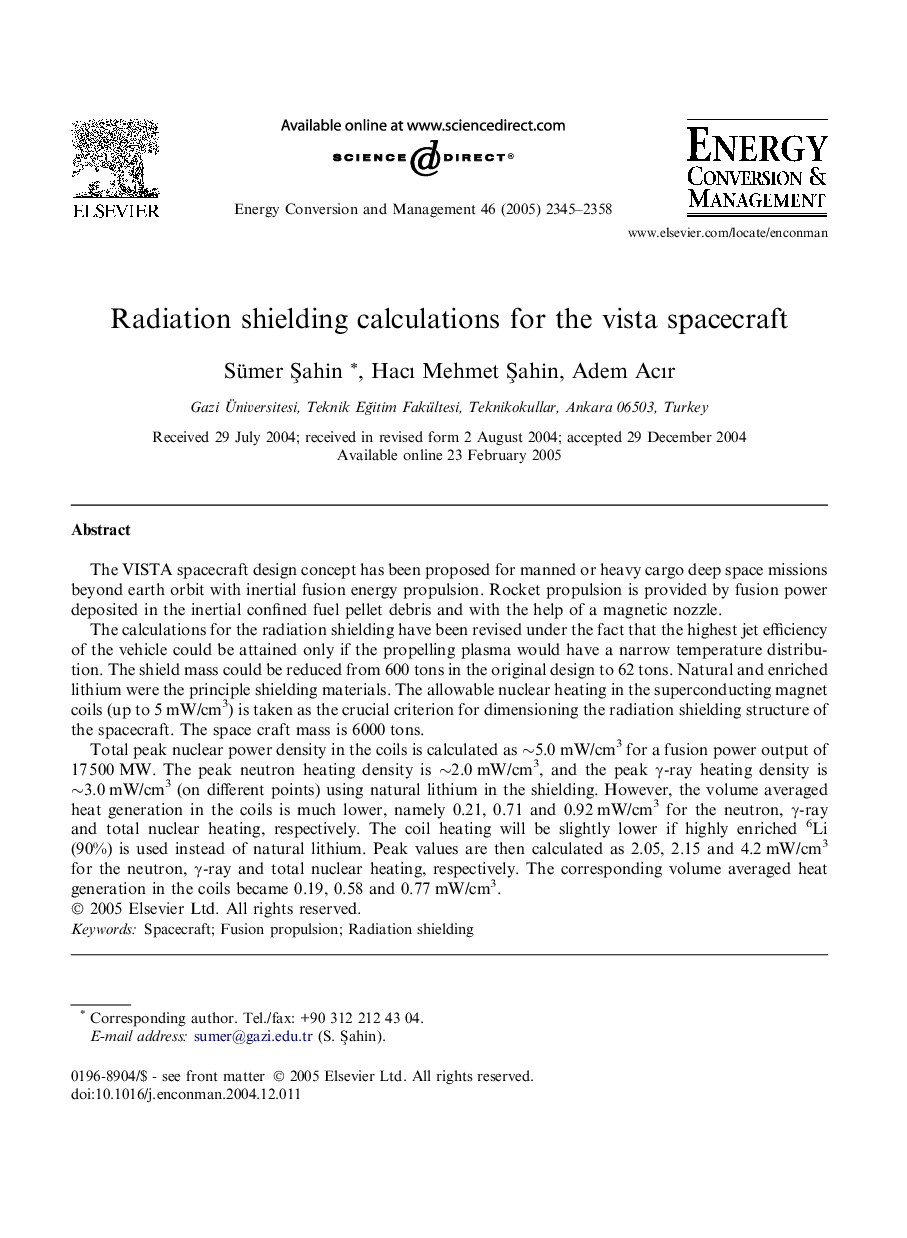| Article ID | Journal | Published Year | Pages | File Type |
|---|---|---|---|---|
| 762729 | Energy Conversion and Management | 2005 | 14 Pages |
The VISTA spacecraft design concept has been proposed for manned or heavy cargo deep space missions beyond earth orbit with inertial fusion energy propulsion. Rocket propulsion is provided by fusion power deposited in the inertial confined fuel pellet debris and with the help of a magnetic nozzle.The calculations for the radiation shielding have been revised under the fact that the highest jet efficiency of the vehicle could be attained only if the propelling plasma would have a narrow temperature distribution. The shield mass could be reduced from 600 tons in the original design to 62 tons. Natural and enriched lithium were the principle shielding materials. The allowable nuclear heating in the superconducting magnet coils (up to 5 mW/cm3) is taken as the crucial criterion for dimensioning the radiation shielding structure of the spacecraft. The space craft mass is 6000 tons.Total peak nuclear power density in the coils is calculated as ∼5.0 mW/cm3 for a fusion power output of 17 500 MW. The peak neutron heating density is ∼2.0 mW/cm3, and the peak γ-ray heating density is ∼3.0 mW/cm3 (on different points) using natural lithium in the shielding. However, the volume averaged heat generation in the coils is much lower, namely 0.21, 0.71 and 0.92 mW/cm3 for the neutron, γ-ray and total nuclear heating, respectively. The coil heating will be slightly lower if highly enriched 6Li (90%) is used instead of natural lithium. Peak values are then calculated as 2.05, 2.15 and 4.2 mW/cm3 for the neutron, γ-ray and total nuclear heating, respectively. The corresponding volume averaged heat generation in the coils became 0.19, 0.58 and 0.77 mW/cm3.
